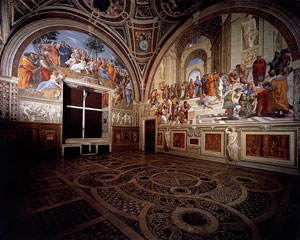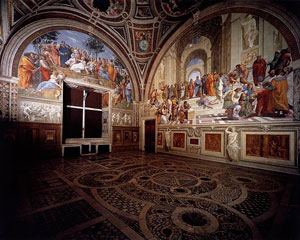by: admin
Event: Disegno: Composition and Drawing at the Core of Italian Renaissance Art
Location: Center for Architecture, 07.28.11
Speaker: Linda Wolk-Simon — The Charles W. Englehard Curator and Head of the Department of Drawings and Prints, The Morgan Library & Museum
Organizer: AIANY Architectural Dialogues Committee
In Florence, Italy, during the Renaissance, “disegno,” or drawing and design, was viewed as fundamental to the realization of Art, Building, Craft, and Design — or “ABCD.” “It’s important to engage the core method of how we design,” said William Singer, AIA, partner at Gruzen Samton Architects, and chair of the AIANY Architectural Dialogues Committee, who curated a series of lectures on how the “The ABCD’s” of design are similar today though taught and practiced in distinct realms.
The last lecture in the series was delivered by Linda Wolk-Simon, who is a specialist in Italian Renaissance art at the Morgan Library and an authority on the artist Raphael. Prior to the founding of The Academy of the Arts of Design in 1563, artists were classified by the guild system as craftsmen and other manual laborers, such as cloth weavers and shoemakers, for example. When artists proved there was an idea that sparked their works, they were elevated in society. The use of paper and ink had a significant impact on the design profession, since drawings gave a window into the intellect and imagination of the working artist.
Drawing is a visual art that makes use of a number of instruments in a two-dimensional medium. Over the years the instruments have included graphite pencils, pen and ink, brushes, charcoals, stylus, and metals like silverpoint. And since disegno stresses not just the literal drawing, but the concept behind a work of art or architecture, should the instruments include CAD and other computer programs? Singer thinks that question could be the subject of an entirely new series of dialogues.
Linda G. Miller is a NYC-based freelance writer and publicist, and a contributing editor to e-Oculus and OCULUS.










